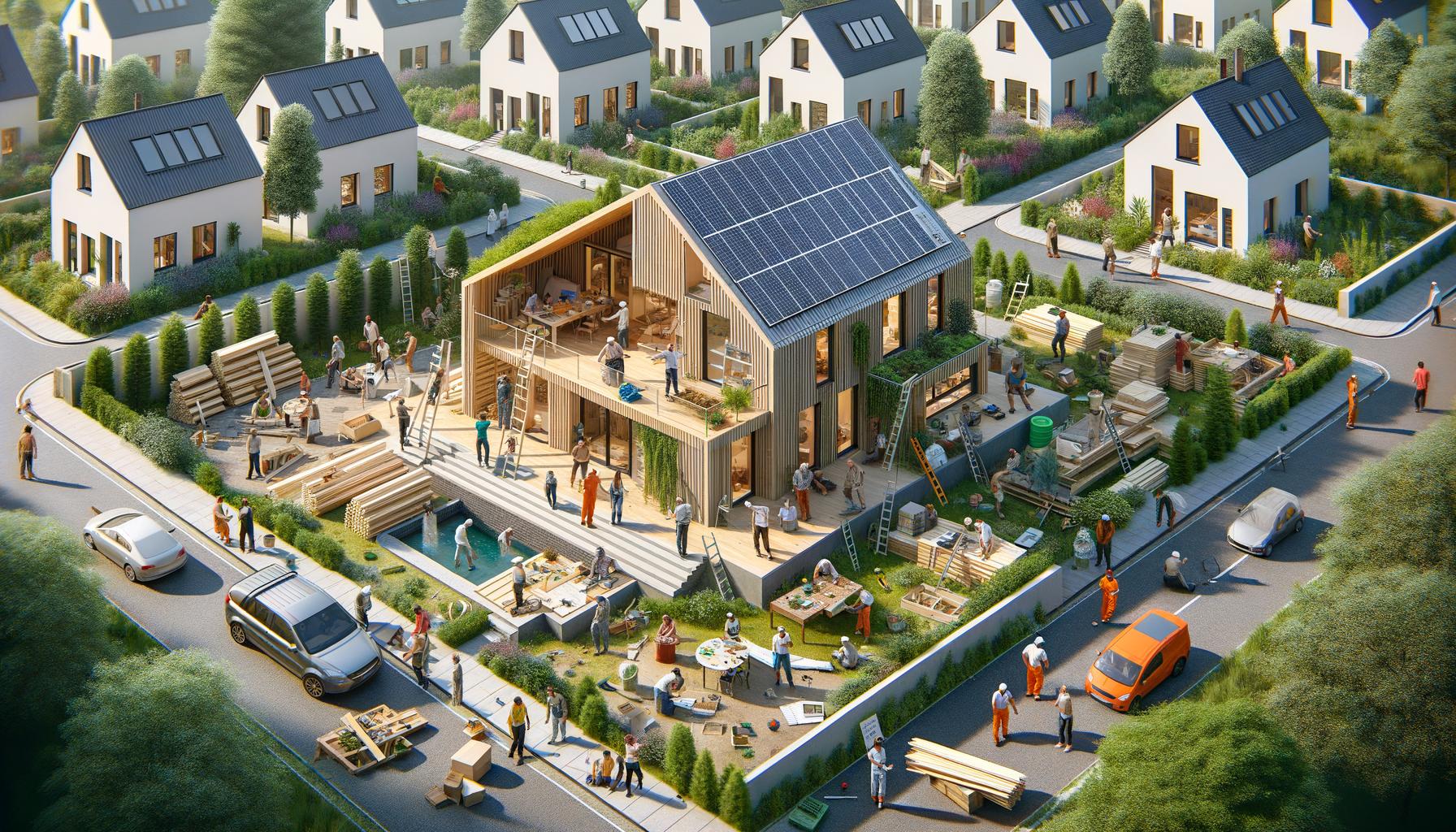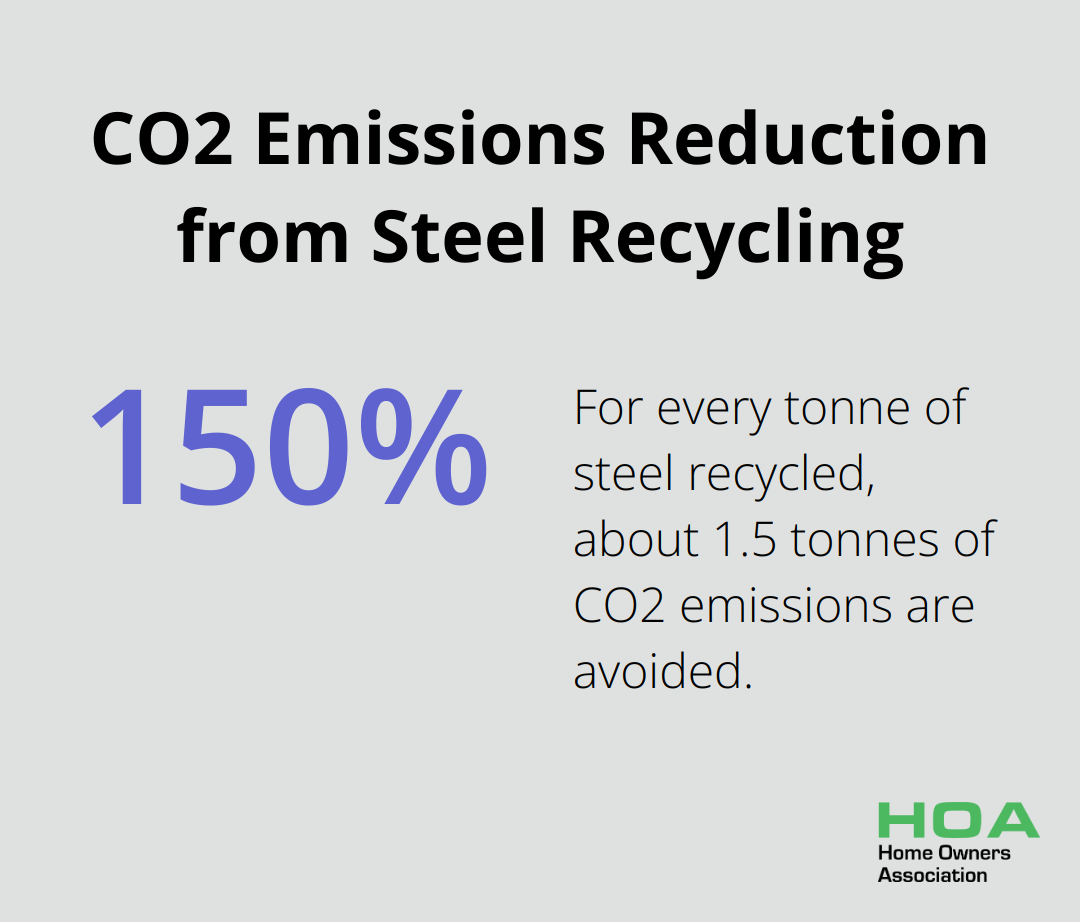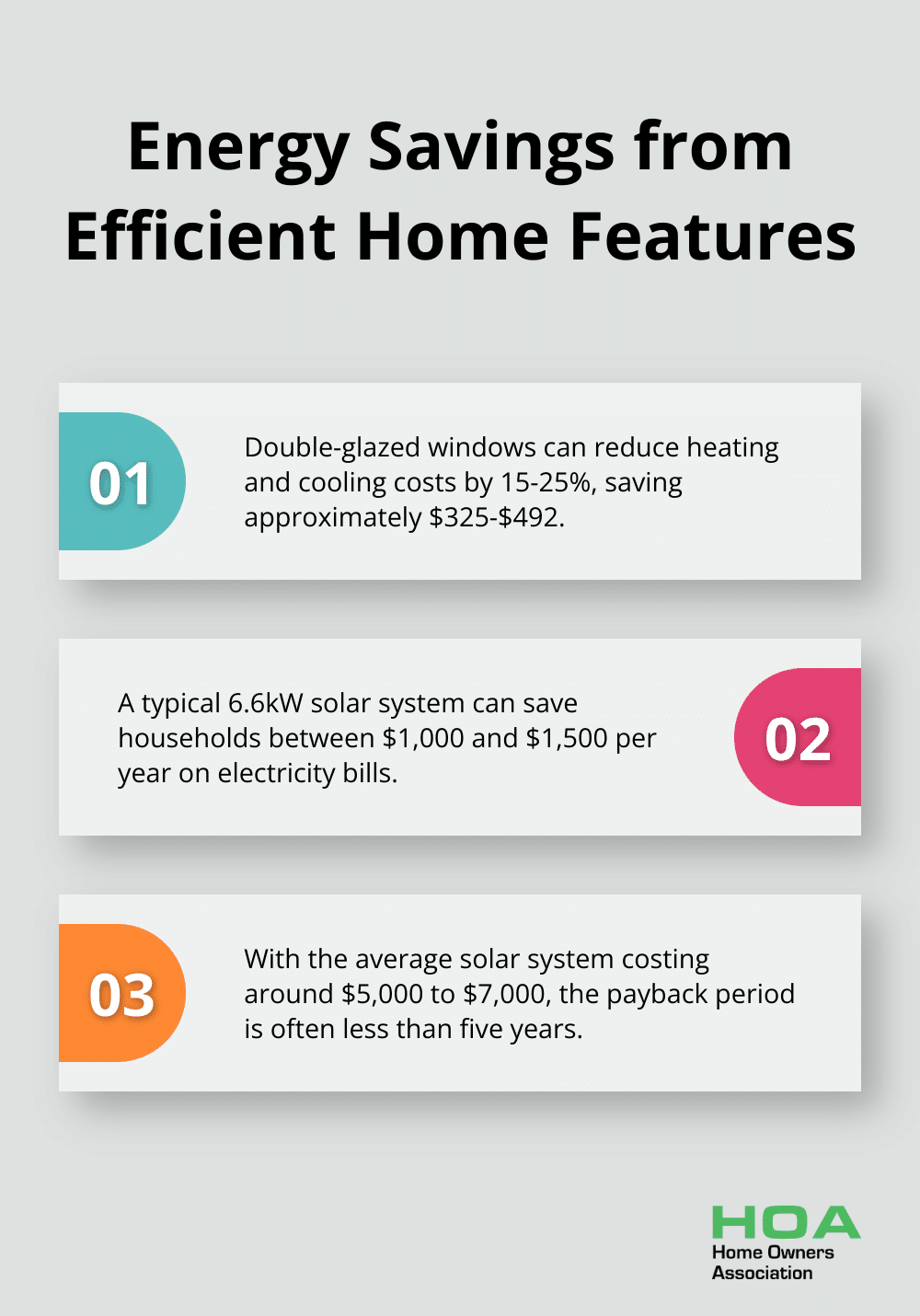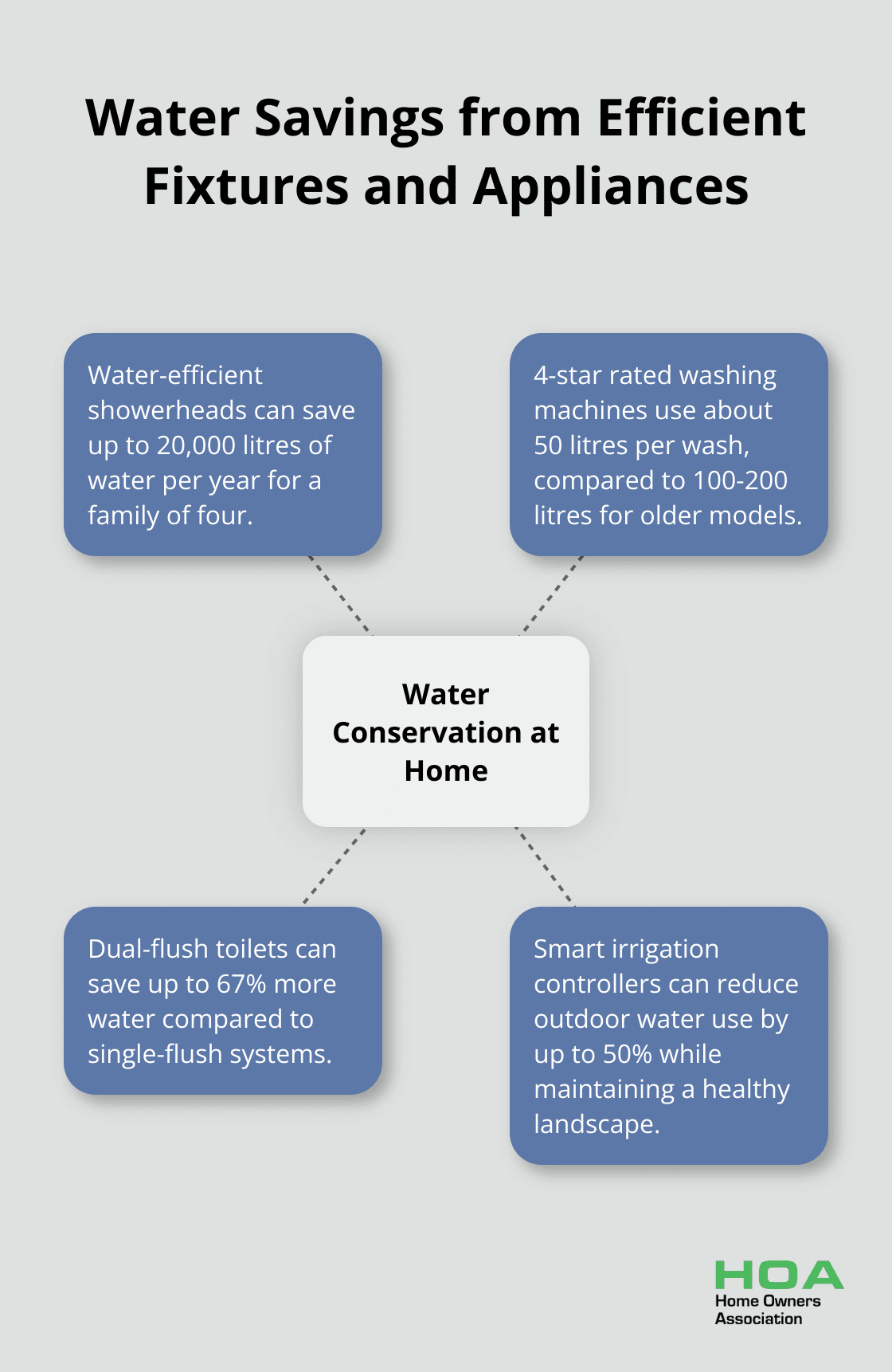
At Home Owners Association, we’re excited to share our guide on sustainable house building techniques. The demand for eco-friendly homes has surged in recent years, with more homeowners recognising the importance of reducing their environmental impact.
In this post, we’ll explore practical methods to create a sustainable home, from choosing green materials to implementing energy-efficient systems and water conservation strategies. Get ready to learn how you can build a home that’s not only kind to the planet but also cost-effective in the long run.
What Are Sustainable Building Materials?
Sustainable building materials form the foundation of eco-friendly home construction. The demand for green building options has increased significantly in recent years. Let’s explore some of the most effective and accessible sustainable materials for your next project.
Recycled and Reclaimed Materials
Recycled and reclaimed materials offer excellent choices for sustainable building. These materials reduce waste and often come with unique character and history. Reclaimed wood from old barns or factories can serve as flooring, beams, or decorative elements.
Recycled steel presents another robust option. It’s durable, versatile, and can undergo recycling repeatedly without losing strength. For every tonne of steel recycled, about 1.5 tonnes of CO2 emissions are avoided, making it a highly sustainable choice.

Low-Impact Natural Materials
Natural materials often have a lower environmental impact than their synthetic counterparts. Bamboo, for instance, is a rapidly renewable resource that grows up to 91 cm per day. It’s strong, durable, and excellent for flooring or structural elements.
Rammed earth is another low-impact option gaining popularity in Australia. This ancient technique uses compressed earth to create sturdy walls with excellent thermal mass properties.
Energy-Efficient Insulation Options
Proper insulation plays a key role in creating an energy-efficient home. Natural insulation materials like sheep’s wool, cellulose (made from recycled paper), and hemp offer excellent alternatives to traditional fibreglass. These materials not only insulate effectively but also have a lower environmental impact during production.
Sheep’s wool insulation can absorb and release moisture without losing its insulating properties, making it ideal for Australia’s varied climate. It’s also naturally fire-resistant and can absorb airborne pollutants, improving indoor air quality.
When selecting insulation, look for products with high R-values (which measure thermal resistance). The higher the R-value, the better the insulation performance.
Choosing sustainable building materials not only creates an eco-friendly home but also potentially saves on energy costs and creates a healthier living environment. As we move forward, it’s important to consider how these materials can be integrated into energy-efficient design and systems, which we’ll explore in the next section.
How Energy-Efficient Design Reduces Home Energy Costs
Energy-efficient design and systems can dramatically reduce home energy costs while minimising environmental impact. Let’s explore some practical strategies to make your home more energy-efficient.
The Power of Passive Solar Design
Passive solar design uses free heating direct from the sun to dramatically reduce the cost of heating your home. It involves orienting your house to maximise sunlight exposure during winter and minimise it during summer. In Australia, this typically means positioning living areas to face north, with large windows to capture winter sun. Overhangs or awnings can shade these windows in summer when the sun is higher in the sky.
Thermal mass is another key component of passive solar design. Materials like concrete floors or rammed earth walls absorb heat during the day and release it at night, helping to regulate indoor temperatures.
High-Performance Windows and Doors
Windows and doors can be significant sources of heat loss in winter and heat gain in summer. Upgrading to high-performance options can make a substantial difference in your home’s energy efficiency.
Double-glazed windows can reduce heating and cooling costs by 15-25%, saving approximately $325-$492. For doors, consider options with good insulation and tight seals to prevent draughts.
While these upgrades may have higher upfront costs, the long-term energy savings make them a worthwhile investment.
Renewable Energy Systems
Renewable energy systems are becoming increasingly affordable and efficient. Solar panels are a popular choice in Australia, with over 3 million households now having rooftop solar installations (according to the Clean Energy Council).

A typical 6.6kW solar system can save households between $1,000 and $1,500 per year on electricity bills. With the average system costing around $5,000 to $7,000, the payback period is often less than five years.
For those in windy areas, small-scale wind turbines can effectively complement solar power. Geothermal systems, while less common, can provide efficient heating and cooling by tapping into the earth’s constant temperature.
When considering renewable energy systems, it’s important to assess your specific needs and local conditions. Expert advice can help determine the most suitable and cost-effective options for your home.
These energy-efficient design principles and systems can significantly reduce your home’s energy consumption and costs. However, creating a truly sustainable home also involves effective water conservation strategies, which we’ll explore next.
How to Save Water at Home: Practical Strategies
Water conservation is a critical aspect of sustainable living, especially in Australia where water scarcity is a pressing issue. We’ve observed a growing interest in water-saving strategies among homeowners. Let’s explore some practical ways to reduce water consumption in your home.
Install a Rainwater Harvesting System
Rainwater harvesting reduces reliance on mains water supply. To calculate rainwater catchment, you can use a simple formula based on the annual rainfall and your roof’s surface area. This collected water can be used for gardening, toilet flushing, and even laundry.
The installation of a rainwater tank is a straightforward process. The size of your tank will depend on your roof area and local rainfall. For example, a 5,000-litre tank connected to 100 square meters of roof can provide up to 70% of an average household’s water needs.
Recycle Greywater for Maximum Efficiency
Greywater recycling involves the reuse of water from sinks, showers, and washing machines for non-potable purposes like garden irrigation. This can save up to 70% of household water use. A simple greywater diversion system can cost as little as $500, while more complex treatment systems may range from $3,000 to $10,000.
When you implement a greywater system, use plant-friendly, biodegradable soaps and detergents. Also, avoid using greywater on edible parts of plants and rotate your watering areas to prevent soil saturation.
Choose Water-Efficient Fixtures and Appliances
The upgrade to water-efficient fixtures and appliances can significantly reduce water consumption. For instance, the replacement of old showerheads with water-efficient models can save up to 20,000 litres of water per year for a family of four.

Look for products with high Water Efficiency Labelling and Standards (WELS) ratings. A 4-star rated washing machine uses about 50 litres per wash (compared to 100-200 litres for older models). Similarly, dual-flush toilets can save up to 67% more water compared to single-flush systems.
Many water authorities offer rebates for water-efficient appliances, making the initial investment more affordable. These upgrades not only conserve water but also reduce your water bills.
Implement Smart Irrigation Practices
Smart irrigation practices can drastically cut outdoor water use. Install drip irrigation systems or soaker hoses to deliver water directly to plant roots (minimising evaporation). Use mulch around plants to retain moisture and reduce watering frequency.
Consider installing a smart irrigation controller that adjusts watering schedules based on weather conditions. These systems can reduce outdoor water use by up to 50% while maintaining a healthy landscape.
Final Thoughts
Sustainable house building combines thoughtful design, innovative materials, and efficient systems. These approaches reduce environmental impact and offer long-term benefits for homeowners. Eco-friendly homes provide lower utility bills, improved indoor air quality, and increased property value (often resulting in reduced maintenance costs over time).
We recommend assessing your specific needs and local conditions before starting a sustainable home project. Consult with green building professionals who can provide tailored advice. Research local regulations and available incentives for sustainable building practices.
Home Owners Association supports Melbourne homeowners in their sustainable building endeavours. Our members receive trade pricing on eco-friendly materials, expert advice, and resources to ensure their projects meet high sustainability standards. We guide you through every step of your sustainable home journey.





